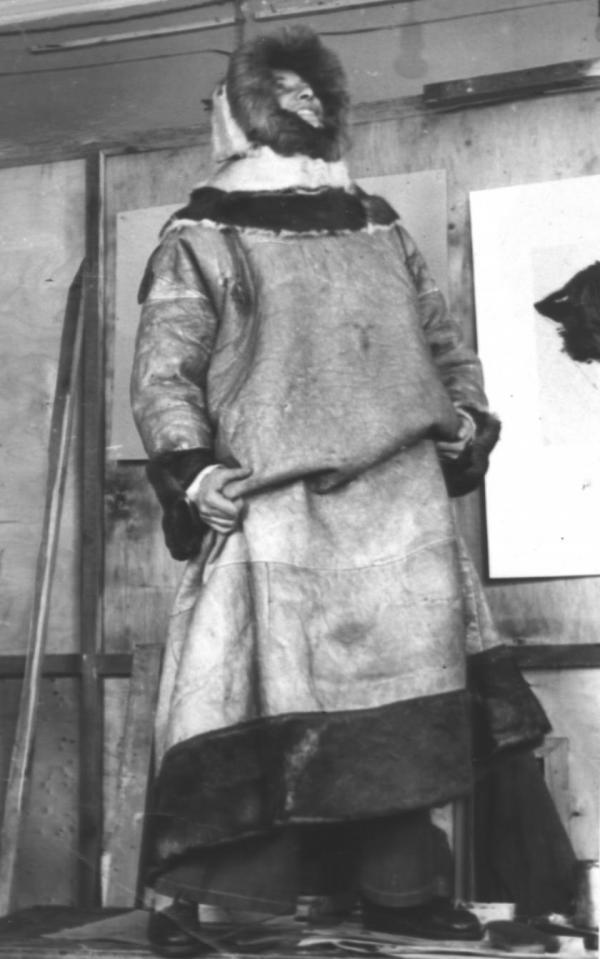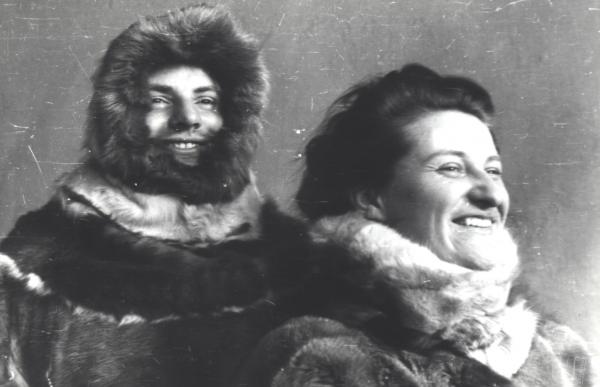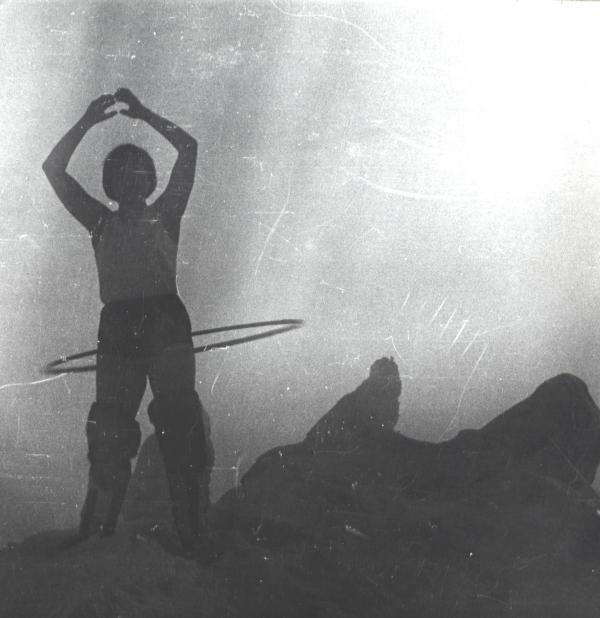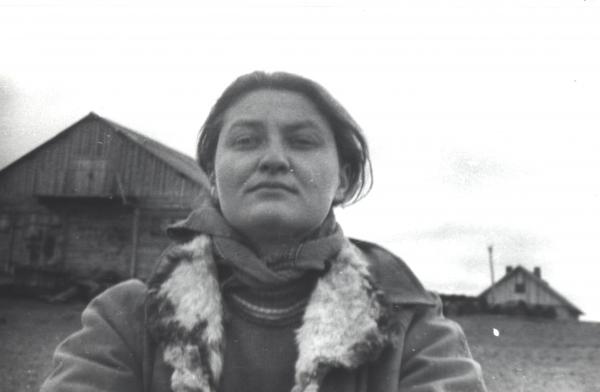Born on July 27 in Kyiv.
1941–1944Fedir Rybachuk, Ada’s father, personnel officer for the Soviet army, went through the war from the first day to the last one. The rest of the family had to evacuate to Kazakhstan, where Ada finished elementary school.
1945–1950Studied at the Taras Shevchenko Art High School in Kyiv, graduated with highest honours receiving a gold medal. During Ada’s studies, lectures were held by H. Kotliar, L. Rachkovska, V. Denysov.
1951–1957Studied at the Kyiv State Art Institute, graduating from the studio of Professor Oleksii Shovkunenko.
1953Along with other students takes part in a summer internship lead by Sergei Grosh in Vylkove, located at the delta of Dunai. Sketches created there were shown at the student exhibition, which resulted in the first art order - the creation of illustrations for Dmitry Mamin-Sibiryak’s book “Reindeer Fairy Tales”, published the same year by the Youth Publishing House. In the following years, she illustrated “The Striped Mustache” by S. Marshak (1954), “The Masters Without an Ax” by V. Bianki (1955), and “The Peg Book” by N. Zabila (1955).
1954Together with Volodymyr Melnichenko takes her first trip to the North, staying in May and June on the White Sea, and in July and September — on the Kolguyev Island.
1955Got the topic of diploma work approved (“Winter shore of the White Sea. Kolguyev Island”), together with Volodymyr Melnychenko goes on the second expedition to the North, which lasted a year and a half.
1957On April 10, with one year delay, public defence of the diplomas of Rybachuk and Melnychenko take place, which also turns out to be the first solo exhibition of artists held in the auditorium of the Art Institute. Ada Rybachuk shows her two large-scale paintings “Trials” and “Stop for Lunch” (not preserved), along with many sketches and several series of prints made in the North.
Creates a painting "Jung" (location unknown). The same year she was awarded with a silver medal at the 6th World Youth and Students' Festival, held in Moscow.
Became a member of the Union of Artists of the USSR. Three years later she got accepted to the Union of Artists of Ukraine.
1957–1959Melnychenko and Rybachuk take the third and longest journey to the North. During this time, Ada Rybachuk wrote the paintings “In Love”, “The End of Silence”, “Hunting Song”, created monotypes and woodcuts.
1959Together with Melnychenko gifts 118 pieces of art to the city of Naryan-Mar, which formed the basis of the first Arctic Museum of Art. Today, the museum’s collection includes 237 works by both authors.
The works created by the artists started appearing in the republican and central periodicals. General approving feedback got opposition in the face of Kassian’s odious article, “The Art Is Not Suffering”, published in Pravda of Ukraine newspaper, in which the author accused Rybachuk and Melnychenko of “departing from the principled positions of affirmation of the method of socialist realism” 1 .
1960–1961Together with Volodymyr Melnychenko creates the monumental and decorative design in the Kyiv bus station, for which receives the First All-Union Award of Young Architects for Interiors.
1962Together with Volodymyr Melnychenko leads art lessons at the children’s boarding school on the Kolguev Island and creates “Big picture of our island” with students.
1963–1968Together with Volodymyr Melnychenko works on the concept for monumental and decorative design of the Republican Pioneer Palace, where the mosaics “Children of the World”, “Banners”, “The City”, as well as the mosaic triptych “Wonderful Violin” are created. The bottom of the fountain, located in front of the main facade of the building was decorated with their decorative composition “Sun, stars and constellations”.
1964The results of work created under the artistic education of children on the Kolguyev Island are displayed in the Literary House in Moscow. Same year, Ada Rybachuk’s “New Year’s Story” is published in “Friendship of Nations”.
1965Together with Volodymyr Melnychenko participates in the competition for the project of the monument to the victims of fascism in Babi Yar.
1967Publishing houses “The Children's Literature” and “The Young Guard” published two books by Rybachuk — “Odors of the Earth” and “Kolguyev Island”. Illustrations for both were created in collaboration with Volodymyr Melnychenko.
1968Work begins on the project of the architectural and plastic solution of the Memorial and Rite Complex “Memory Park”, construction of which begins at the Baikove Cemetery in Kyiv. It will take about 13 years for Rybachuk and Melnychenko to finish this grandiose design.
Along with Volodymyr Melnychenko works on a project of the historical and archeological park “Ancient Kyiv”.
The exhibition “Drawing of Children of the Kolguyev Island” is displayed at the All-Union Exhibition of Children’s Books and Toys, which takes place in Moscow, and subsequently — within the All-Union Mobile Exhibition “Baby Artists”.
1968–1974In conjunction with the design of Memory Park, together with Volodymyr Melnychenko travels to the villages of Volyn, Podillia, Bukovyna, studying folk customs and rituals. The artists convey their impressions of what they saw in the series of prints “Indian Summer”, “Baba’s Death”, “Easter at St. Demetrius”.
1970sMajor efforts are directed towards the creation of the Memory Wall, designed in collaboration with Volodymyr Melnychenko. The artists have developed a new technology for the execution of monumental reliefs, which consisted in the production of a special trench frame, which was later filled with liquid concrete. The total area of reliefs reached 2000 m2, in particular, the height varied from 4 to 14 m, and the length was 213 m. Later, the artists will write: “Equally passionately we formed both architecture and plastic form of land — space and the sculpture itself. Its form had to be covered with a mural, striving with all knowledge and ability to synthesize, adjusting to what was happening in Memory Park, to a worthy sounding event, the mural had to play the most significant action on human life. To return the human death act to its humanistic meaning” .
1970Rybachuk and Melnychenko’s work with children, conducted during the 1960s, resulted in the album “We About Your Island. Drawings of the Children of the Kolguyev Island” published in Moscow by the Soviet Artist.
1971Gets invited by Moscow Institute of Geophysics to take part in the expedition to Kamchatka. The purpose of the expedition is to test the moon apparatus on Mount Avacha.
1972In cooperation with Volodymyr Melnychenko designs the Oratory of the Revolution in Moscow, the historical and archaeological complex “Kontraktova Square” in Kyiv, and the stone symbol “Kyiv — Hero City” in Florence.
1980–1981Together with Volodymyr Melnychenko designs a monument to the Children-Heroes for the Glory Square in Kyiv.
1982On the eve of 1982, at the meeting of the Artistic Expert Board of the Ministry of Culture of the USSR and the Artistic Council of the USSR State Building on Monumental Sculpture, a decision was made to suspend the monumental and decorative works in Memory Park, which meant the destruction of the Wall. The “order” was received on December 6, 1981 in a letter signed by the Deputy Chairman of the Executive Committee of the City Executive Committee. During the three months of the following year — March, April and May — the reliefs of Ada Rybachuk and Volodymyr Melnychenko were plastered with concrete.
In May 1982, the journal “Architecture of the USSR” came out with “justification” of this act of vandalism — article by Abraham Miletskyi “Synthesis — problem or task?”
Together with Volodymyr Melnychenko began work on a series of large ceramic sculptures “Bronze Images”, work on which lasted until 2000.
1985–1986In collaboration with Volodymyr Melnychenko creates series of lithographs “Memory” and “Stop the Nuclear Threat”. In 1999, the artists donated them to the National Art Museum of Ukraine.
1986In collaboration with Volodymyr Melnychenko creates the tombstones of Dr. Valentin Kravtsov, his parents and a niece installed at the Baikove Cemetery. Together with other tombstones created during the 1980s — 1990s, they made a memorial cycle called “In the Memory of Friends”.
1990Writes a screenplay for the movie “The Cry of the Bird”, which is directed by I. Holstein in the Ukrainian Studio of Chronicle and Documentary Films.
1991In collaboration with Volodymyr Melnychenko works on the project “When the world is destroyed”, dedicated to the memory of the victims of Babi Yar, which included a book and three tapestries.
2010On September 21, Ada Rybachuk dies in Kyiv, and on September 24, she was carried through the Memory Park along the willows, which she planted with Volodymyr Melnychenko thirty years ago to be buried beneath them in the Baikove Cemetery.
2 Rybachuk A., Melnychenko V. The Cry of the Bird. II: Fragments. Kyiv: ADEF-Ukraine, 2000. P. 53.



